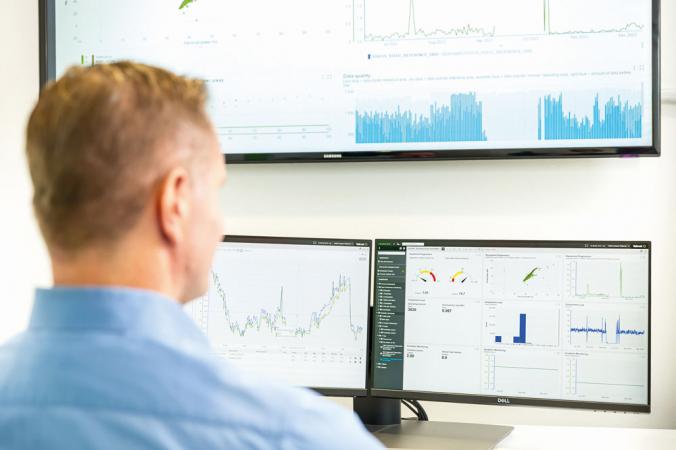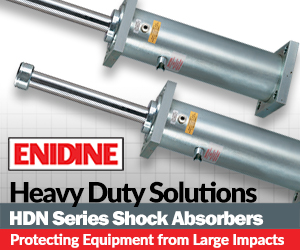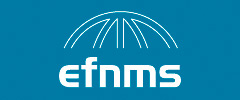"The Infrared Solution is Simply Tremendous"
Engineering firm Adler run by experienced engineer Martin Adler has been providing highly qualified industrial thermal imaging services since 1996. The Germany-based company uses top-of-the-range FLIR T1020 handheld thermal imaging cameras for maintenance applications.
In addition to offering thermographic inspections of electrical switching and distribution systems in all voltage ranges, Martin Adler’s engineering services also include thermography of mechanical equipment and components as well as measurements in industrial settings for process analysis, diagnosis, process optimization, product development and research, and the inspection of machines, equipment and insulation. Moreover, Adler also advises clients in the planning of installed, user-specific infrared measurements and offers problem analysis and troubleshooting for already installed IR-measuring systems.
There are hardly any industrial thermographers in Germany that have as much experience as Mr. Adler. Even during his studies at the University of Applied Sciences in Gelsenkirchen at the beginning of the nineties, he programmed his own evaluation software for infrared measurements at the laboratory for energy technology.
- There were no standardized solutions at the time and therefore individual initiative was required, Adler recalls.
From the passion he developed as a student, he then established his own company in 1996, which celebrated its 20th anniversary in April 2016. Even back then, the focus was on electrothermography.
- It became clear to me: there was a great interest in thermographic inspection in the industrial sector, but there was a fairly meagre selection of qualified services. In 1996, there was still no recognized qualification for thermographers in Germany and only two years later the first certifications were introduced here according to the American standard.
Measurements conducted by inexperienced service providers were often not reproducible and some of his competitors offered little more than colourful pictures with their infrared cameras. Martin Adler recalls a particularly horrific scenario involving an energy provider. An inexperienced thermographer had inspected insulators on high voltage lines on an extremely sunny day and thus found a high number of overheated units.
- However, most of the insulators were perfectly in order, and the man simply did not have the necessary experience. Outdoor recordings often simply do not provide useful results in strong sunlight. Such faulty inspections at that time brought the whole industry into disrepute.
Systematic approach pays off
Based on his studies, Martin Adler took a very different and much more systematic approach, which he has remained faithful to. Regularly repeated inspection of critical components under reproducible conditions plays the decisive role here.
- Back then, I first had to gain the confidence of my customers, Adler recalls.
- Often a whole year passed between the first phone call, the first appointment, a demonstration of the technical measurement possibilities, internal coordination between the customer’s technicians and the purchasing department, and the actual order.
The initial investment of 120,000 Deutsche marks for a thermal imaging camera from FLIR’s predecessor company Agema didn’t make the start any easier for Martin Adler. He says it took several years to fully amortize this investment. He used this time to develop his excellent reputation. To this day, this reputation obliges him to use the best available thermal imaging camera model.
The FLIR T1020
With the T1020, Martin Adler is using the absolute top of the range of industrial thermography.
- The detector’s IR resolution is huge, explains Adler enthusiastically.
- This increases efficiency: On a significantly sharper and more detailed thermal image, you can discover problems much more easily and with much more certainty. You can even discover small anomalies, which may not have been recognizable with the other camera or a lower resolution.
Adler adds that camera operation has also become increasingly easy over the years.
- This reduces the error rate, not only during camera usage, but also in the evaluation phase.
Adler used to always have a notepad and pen ready to write down the errors found. Today, descriptions are stored in the camera in advance.
- My T1020 “knows” exactly where it is, e.g. in property No. 1, building No. 10, switch room on the first floor. If, for example, I discover a problem in the 39th object, then its position is automatically linked with the thermal image, thus avoiding confusion.
Electrothermography
Electrothermography is the most important area of use for Martin Adler. Detecting malfunctions before they bring a chemical plant to a halt, for example, not only makes sense for fire protection and security reasons, but also with regard to economic aspects.
- In chemical plants, a half-hour standstill can incur 6-digit costs, and this is not only due to interrupted production. The plant must be commissioned again as stipulated and certain components inside the system may need to be removed so as not to cause negative effects. Fast procurement of spare parts for older components can also require great effort and thus be expensive.
To make sure that none of this happens, Adler conducts regular inspections according to a clearly defined schedule.
Thermal imaging in areas at risk of explosion
Inspections in areas at risk of explosion are also part of Adler’s everyday work, even though he finds far fewer errors in this setting.
- Areas at risk of explosion are from the outset so critical that a high value is placed on safety. Of course this applies to the electrical and mechanical installations, so here we find errors significantly less often, he says.
Nevertheless, the inspections here are anything but superfluous, because any abnormalities in such areas could pose very significant risks.
Lining of furnaces
Industrial furnaces consist of a furnace shell, which is protected by a fire-resistant inner lining against the extreme temperatures of the molten metal. Of course this lining is exposed to normal ageing processes: It is exposed to wear in operation and is eventually damaged to the extent that it requires replacing. The time between two linings is called the “travel time”, and the longer the journey, the more economic the operation can be. However, a furnace with a defective lining could also have disastrous consequences. The molten metal would destroy the shell and, in addition to high costs, in a worst-case scenario could even cause injury. Using a thermal imaging camera, it is possible to determine the condition of the lining from outside the furnace even during operation. Regular thermography inspections ensure safety and prevent economic losses.
Qualification and certification
Today, Martin Adler is one of the most sought after thermography specialists with certifications according to the European DIN EN ISO 9712 Level III, the ASNT, the CFPA and the VDS in addition to his many years of experience. This can be seen in his continually growing order volumes.
Adler doesn’t worry about competition from inexpensive thermal imaging cameras.
- Cheap devices hardly play a role in the area of professional industrial thermography. Plant operators may sometimes purchase them for the occasional inspection, but they can’t meet the insurance requirements with regard to systematics and accuracy with these devices.













